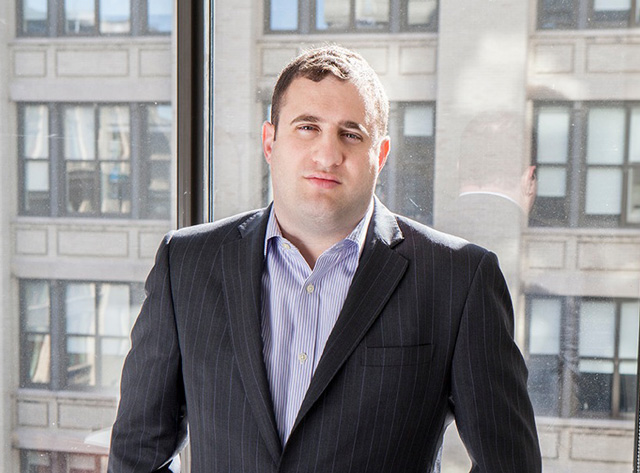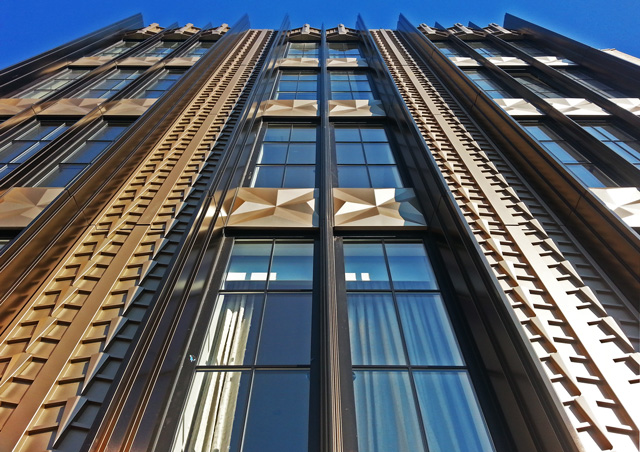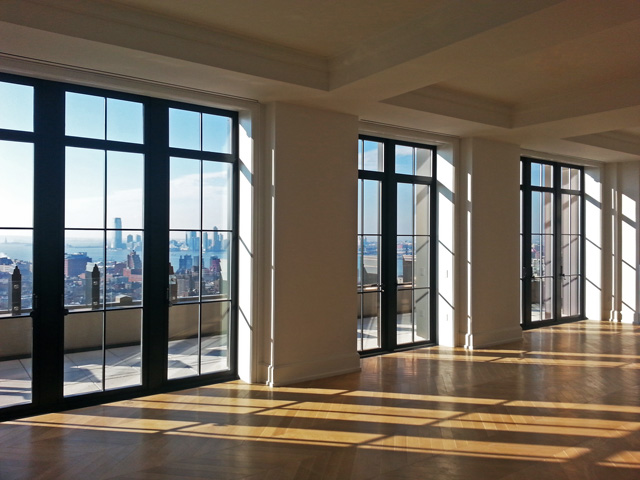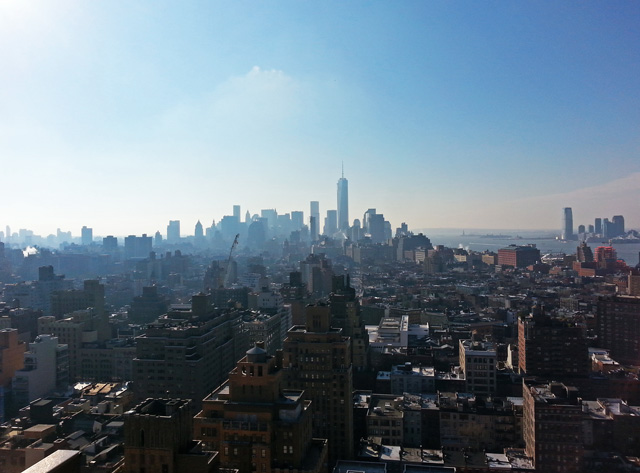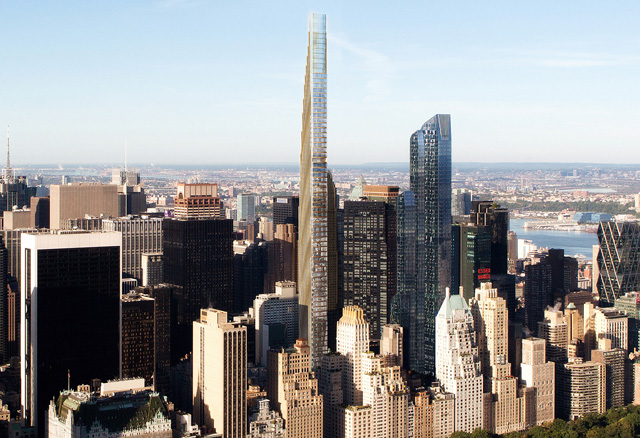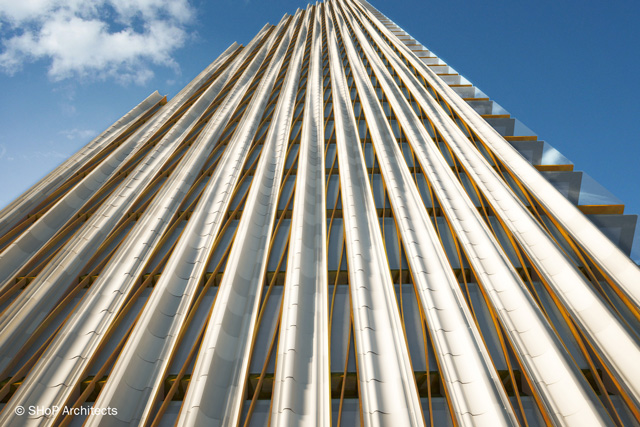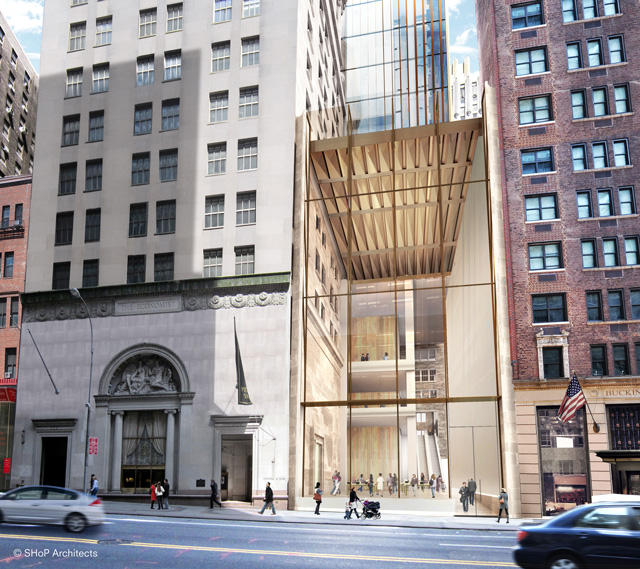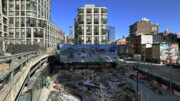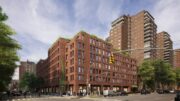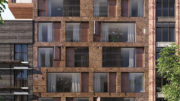YIMBY met with Michael Stern of JDS Development to discuss the firm’s latest additions to the New York skyline, which are more than comprehensive. Construction is wrapping up at Walker Tower — which is record-setting, as the most expensive building below 23rd Street — and work is just beginning at 111 West 57th, which promises to alter the Midtown skyline further.
YIMBY in bold.
Did you play Simcity as a child?
I did play Simcity, although I don’t know if it inspired me or not. I’m from New York.
How did you get into development?
At first it was from a construction side — almost right out of high school I went to work as a project manager for a developer in Florida. And I learned construction first, and development second.
Did you have an idea of what you wanted going into Walker Tower, and what did you think when you first saw the building?
Well first, the reason we bought the building: We thought it had great bones, and the views were just jaw-dropping. But really, we set out with an ambitious plan to create the finest conversion that’s ever been done in this city, and I think we did it.
What was the biggest challenge when it came to re-building Walker Tower?
Construction logistics; it was very very complicated, because we have an occupancy beneath us, as Verizon retained some floors. We moved every stair, we moved every elevator, we moved the cooling towers — we had to maintain two forms of egress, working fire alarms, working sprinklers — air conditioning.
What floor do the residences start on?
Eight, and they run up from there.
111 West 57th is your tallest project to date, and the initial design was by CetraRuddy. What’s the back-story on that project — getting into it, did you see it turning into something that would end up 1,350 feet tall?
Initially we only owned the vacant lot and some air rights from an adjacent building, so we designed a roughly 680-foot tower with CetraRuddy that was more slender than what’s going up. We are doing this project with a great partner — Kevin Maloney and Property Markets Group, who was also our partner on Walker Tower.
It was more slender?
It was, the original was only 43 feet wide. You know, it wasn’t a very efficient building; it worked and we were ready to break ground on it, but then we found out the Steinway Building was available, and we knew that incorporating Steinway would make the building much better, much more efficient; it would be wider, taller, and have more commanding views. We sort of stopped when we were ready to go, and rebooted with the Steinway Building. It’s a vastly better project — very happy we didn’t start with the original. It was a great tower, but the one we’re building now is better; it’s 60 feet wide, almost 80 feet deep, and almost 1,400 feet tall. It’s a spectacular tower, it really is. And the floor-plans it has produced are no-excuses terrific — it’s going to be exciting.
When it comes to defining the skyline, you have two icons in your pocket; design seems to be important to you.
I think that developers have an enormous responsibility to respect the skyline, because you’re leaving an impact that’s going to last 100 years, or more — depends who builds the building [laughs]. But we have a responsibility. You’re leaving an imprint that’s going to outlive you as a developer; every project’s different, and I don’t think there’s one perfect aesthetic, as everything is its own unique animal. When it comes to Walker Tower, we wanted to be respectful; we have an architectural pedigree to start with, and wanted to do an ambitious conversion and expansion and not lose the DNA of the building that was here, because when you look at the building as it was historically, and you look at it now, it still feels like it’s of the same family even though many changes have occurred.
With Steinway, it was an exciting opportunity, because clearly the tower and the Steinway portion are going to be different things. We wanted to basically design a tower that was complimentary to the landmark without mimicking it in a disingenuous way. So you have the Warren & Wetmore Steinway Building — it’s limestone, beaux arts, beautiful — and with the tower, we wanted to use old-world materials, like terracotta and bronze. And give [111 West 57th] the depth & the relief of the classic buildings, but to take those classic materials and use them in a modern way. So if you look at the terracotta, it’s curved terracotta, with a beautiful bronze underlayment; it’s very modern, and it’s certainly not trying to be a building from the 1920s, because its proportions are definitely 2014.
What made you choose SHoP for 111 West 57th Street?
SHoP‘s a really interesting firm; first of all they have a great culture. It’s very confident, and they’re not afraid to push boundaries. What really made me hire SHoP was Barclay’s, because when you look at Barclay’s — whether you love the design or not, and I happen to love it — it was very bold. Another architect had designed something, and then it got value-engineered, and people didn’t like what resulted.
It was originally Gehry, yes?
It was Gehry, then HOK, then SHoP. And they came into this very political, very watched job, and executed this very bold Cor-ten steel oculus. I really respected that, and I thought it was executed brilliantly, and SHoP also was very involved in making sure the facade was actually constructible. It was sort of a balance of pushing the design while being practical, and making sure things are constructible, on budget, and on schedule. When I saw that building I said that I had to talk to these guys — that’s what made me want to engage in the conversation. And as soon as I talked to them I was hooked. I like everything about them; they’re great.
‘Stairway to Heaven’ is a name some have coined for 111 West 57th. What do you think?
I don’t mind it — you know, it’s certainly not something we coined, but it’s a great song, and who doesn’t love Led Zeppelin. Could be a lot worse.
Shadows in the park?
I think the issue is being overstated. I can speak to my own building, and our shadow impact is so minimal and so brief, that it’s not even anything worth talking about.
Others have talked about creating design standards for buildings that stand over 1,000 feet — do you think that’s a good idea, or not? Not all the buildings on 57th Street will be quite as nice as 111 West 57th.
I think it’s worth discussing, but I fear overregulation; there are so many impediments to getting anything of this scale built already. There’s so much regulation, and the sites are so hard to assemble — they take so many years. If you look at all the assemblages of these towers people are focused on right now, each one took many many years; they are very few and far between, even though we have a bunch of them now. I really don’t see this as a widespread issue — I think most of the assemblages are done, and I definitely fear overregulation.
We have to understand that there’s a second skyline evolving above the existing one, especially looking at it from the Park, and I think that’s very exciting. As New Yorkers, we want to constantly re-invent, and push — not only to get stuck idolizing buildings from 50 or 60 years ago.
For any questions, comments, or feedback, email newyorkyimby@gmail.com
Subscribe to YIMBY’s daily e-mail
Follow YIMBYgram for real-time photo updates
Like YIMBY on Facebook
Follow YIMBY’s Twitter for the latest in YIMBYnews

